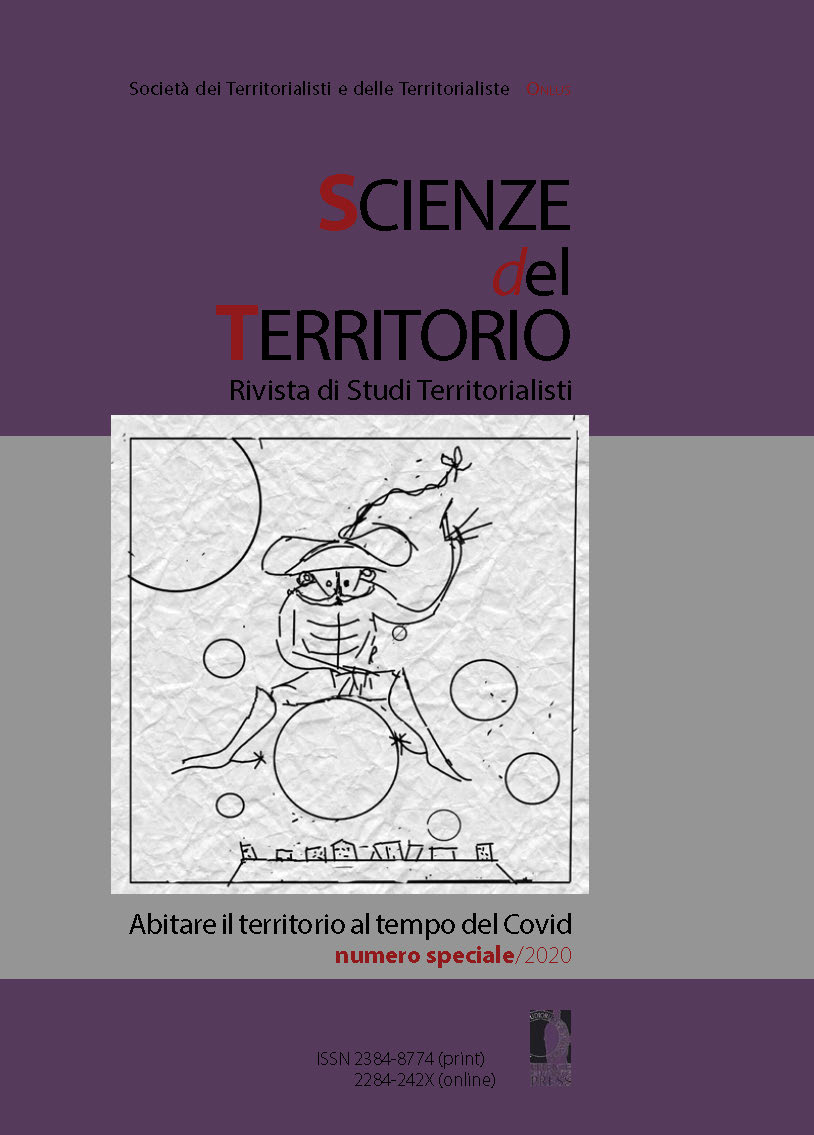Published 2020-12-05
Keywords
- maps,
- ‘classist’ epidemic,
- industrial districts,
- post-Fordism,
- labour
How to Cite
Abstract
The territorial analysis of the spread of Covid-19, detailed at the municipality and district level, is a necessary tool for understanding the morphology of the contagion and fighting it. It reveals its ‘classist’ character, which has affected the most poorer urban areas, but also as at the challenge of the virus the ‘network capitalism’ has revealed its structural ‘frailty’. Almost all long networks have thus crashed, as the borders closed, while the district economy has seen its virtue - the relationship of proximity, relational intensity, pushed interaction - transformed into vice and deadly threat: the ‘red’ areas, in which contagion and lethality are concentrated, correspond almost palmarily with those where productive and commercial interactivity was more fibrillating. The virus did not walk only on the silk road, in Italy it also retraced the provincial networks of production interchange, the salmon ascent along the valleys that had characterized the transition to post-Fordism, saw the clusters of warehouses become hubs of the contagion (the story of Bergamo is exemplary). The intertwining between the fibrillating intensity of doing and the frailty of the productive structure was lethal for areas such as the central Padania: between the fever of doing and the fever of the virus there is a tragic interaction where it is not the ‘Rhenish capitalism’ that dominates but the very intense and very frail Italian one.


